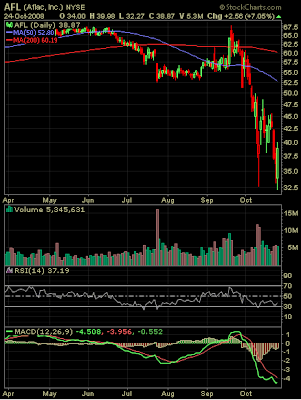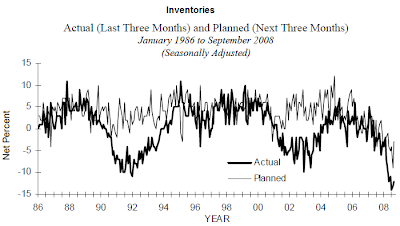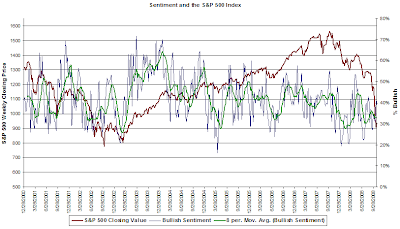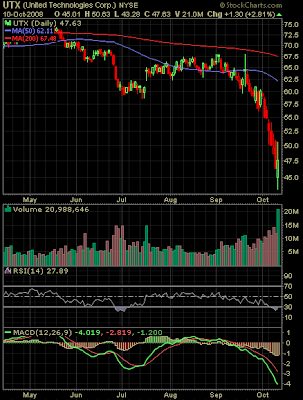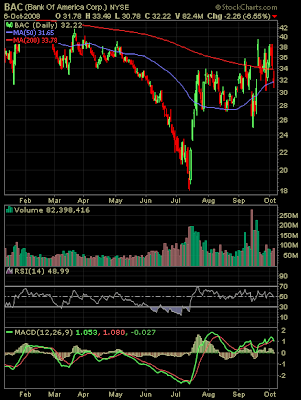(I originally posted a portion of this article on The DIV-Net website on October 12, 2008)
As a follow up to one of my post last week on evaluating management using ROE, this post will touch on an additional management evaluation tool. Before I do that though, these are extraordinary investment times and many an investor are unsure of what to do next. Many factors will go into that ultimate decision, but I believe Warren Buffett said it best a few weeks ago:
"You know, five years from now, ten years from now, we'll look back on this period and we'll see that you could have made some extraordinary (stock market) buys. That doesn't mean it won't get more extraordinary a week or a month from now. I have no idea what the stock market is going to do next month or six months from now. I do know that the American economy, over a period of time, will do very well, and people who own a piece of it will do well."
A key aspect to the success of a company and its stock price is the strength of the company's management. In fact, if this one element is missing, no matter how good a company or its competitive advantage, the lack of strong management can lead to poor company results.
In addition to evaluating the company's ROE, investors should review the company's shareholder letter that accompanies the firm's annual report. The
American Association of Individual Investors recently wrote an article on elements to look for in the letter. The article notes:
The one window into a CEO's perspective and goals is the shareholder letter contained in the annual report. But upon reading one, you might find that you can't understand what the CEO is trying to say. Often, shareholder letters are riddled with jargon and glossy prose that convey no information. Six of the most popular CEO letter clichés:
- Talented people,
- Global presence,
- Market knowledge,
- Financial strength,
- Leverage competitive advantages, and
- Create significant value for our shareholders.
The article indicates investors should read the shareholder letter and circle in red the cliché phrases outlined above. If one sees more red than black, be forewarned. Once the company passes this test, there are seven criteria an investor should score. The AAII article contains more detail on each criteria, but a summary is listed below:
- CEO Voice—Personal and Authentic: When you finish reading the shareholder letter, do you feel like you had a meeting with the CEO? Do you feel as if the CEO is talking to you?... A CEO's attitude toward shareholders can reveal how he or she runs the business—for long-term profits or short-term gain. You need to read between the lines of the letter to try to figure out what kind of "relationship" a CEO is looking for
- Practicing the Financial Golden Rule: Is the CEO giving you information that he would expect to receive if he were the investor?
- Detailed and Jargon-Free Information: Is the CEO explaining complex topics in simple terms without "dumbing" down this information? Is the letter free of clichés and technical jargon?...
The best letters provide business details in simple, but never simple-minded, language. And they explain how these investment opportunities will produce profits.
- Consistent and Realistic Information: Has the CEO provided historically consistent information, especially with regard to the company's earnings? Is the CEO explaining the company's goals and how the company intends to meet its goals?...
A CEO who wants to show that he or she is trying to be accountable to investors and other stakeholders is going to tell you about their corporate goals. Financial goals reveal the financial targets that CEOs want their companies to achieve; operating goals reveal the CEO's aspirations to improve the way the work gets done.
- A Proper Accounting of Earnings: Does the CEO letter reveal an understanding of the difference between the company's cash and accounting earnings? Can you find statements of earnings in the shareholder letter and easily locate this same number on the firm's income statement in the annual report?
Even when CEOs do report company earnings, it's often hard to figure out what they mean. You can blame part of this problem on accounting.
Earnings can be reported at different "layers." Many CEOs choose to report their earnings in shareholder letters several layers up, typically at a level that lets them show their company's earnings in the best possible light. This is not illegal. But when companies offer these customized pro forma earnings, you'll want to examine the underlying assumptions the company is using to calculate them.
To judge management's accounting integrity in the shareholder letter, look for:
- Clarity in reporting the nature of non-routine write-offs that affect company earnings; and
- Consistency in the presentation of earnings over time.
- Balanced Strategic Sense: Does the CEO include a balanced picture of the execution of the company's strategy and its results? Are you learning about the year's business failures as well as the successes?...
The topic that is most frequently cited in a shareholder letter is "corporate strategy." This should be no surprise—when we learn about a company's plans to make money from tangible assets, like plants and equipment, and intangible assets, such as patents, brand recognition and new technology—we get to the heart and soul of financial analysis.
Many companies describe the corporate strategy as a list of action steps they intend to take. But such a list only tells you what a CEO plans to do. They don't show how these steps are being acted out in real-life situations....
- CEO Values:Is the CEO describing his or her values and are these related to specific events in the company? Do you gain more understanding about how the CEO and his or her company practice these values in relation to their corporate stakeholders: employees, customers, investors, suppliers and others?
A key investor takeaway from reading the letter is whether or not you feel comfortable entrusting your investment dollars to a company's particular management. So when you receive an annual report, read the shareholder letter first.
Source:
Shareholder Letter Revelations: Can You Trust the Leadership?American Association of Individual Investors
AAII Journal
2008
http://www.aaii.com/includes/DisplayArticle.cfm?Article_Id=2310&digit=524









